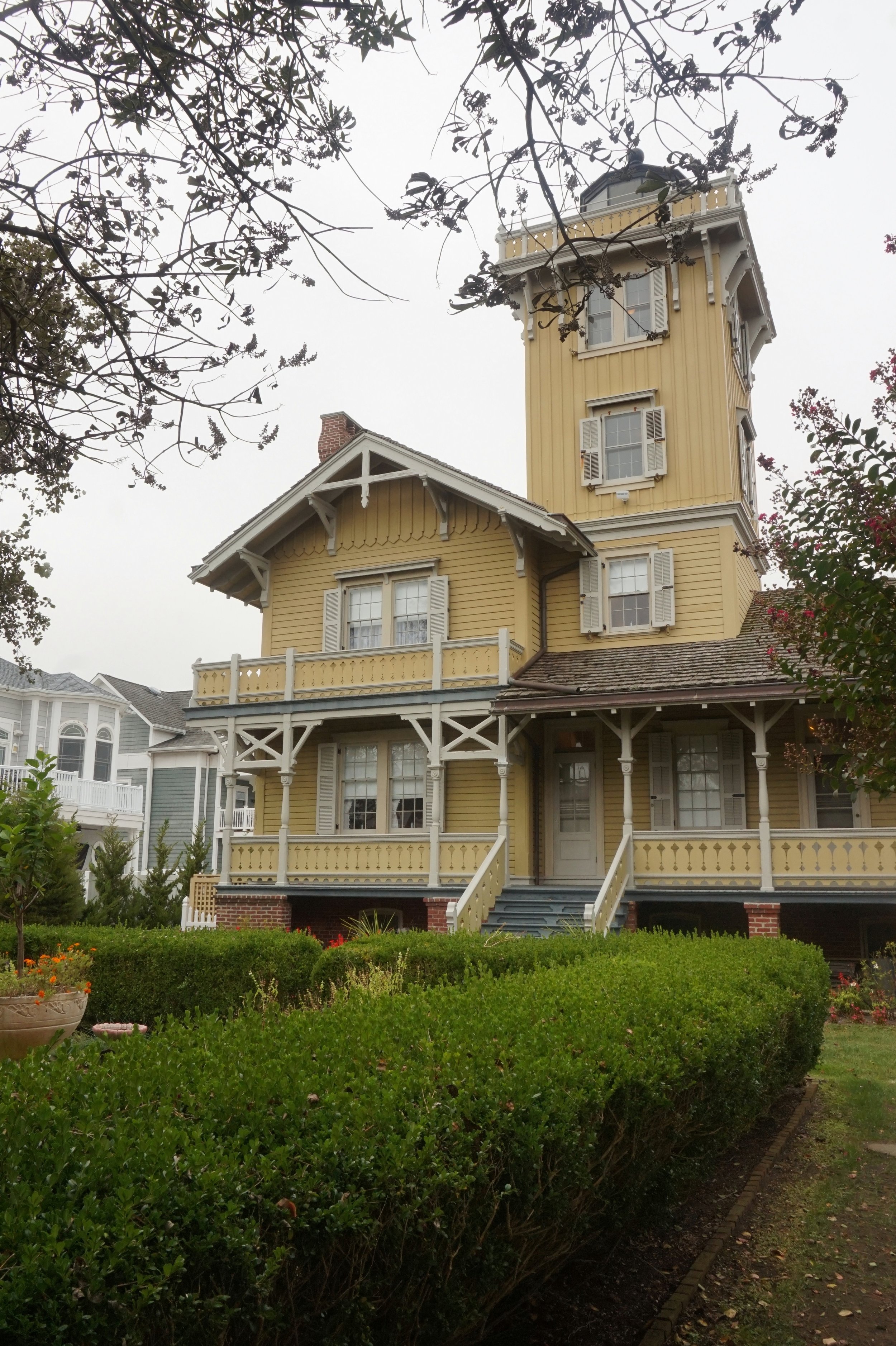Hereford Inlet Study
Did you know…
The Hereford Inlet, located between North Wildwood and Stone Harbor, is a natural opening along the Jersey Shore between tidal creeks and wetlands and the Atlantic Ocean. This inlet is a mile wide and is in a constant state of change.
The historic Hereford Inlet Lighthouse in North Wildwood, NJ.
A small gap between barrier islands along the southern Jersey Shore is known as Hereford Inlet. It bridges the Atlantic Ocean and the Intracoastal Waterway. Although no information can be found as to how Hereford Inlet received its name, the word hereford is defined as an animal of a breed of red and white beef cattle.
The inlet used to be situated near the village of Anglesea, but is now known as North Wildwood. In the late nineteenth century, this area was a busy center of fishing and coastal commerce, as well as frequent shipwrecks due to many dangerous strong currents and frequently shifting sandbars just off the coast.
The Hereford Inlet Life Saving Station was established in 1849 to help save the lives of shipwrecked mariners and passengers. In 1882 the life saving station was moved to a new site due to coastal erosion. But with the increase in shipping traffic and shipwrecks a new larger station was established. On June 10, 1872, Congress appropriated $25,000 for the construction of a fourth order lighthouse at Hereford Inlet on a one-and-a-half-acre site on a dune overlooking the inlet. The lighthouse was completed on April 16, 1874.
Yet, even today, the inlet is a dangerous waterway to navigate due to shifting sands from the longshore current. For the past few years, the currents have pushed the sand from Avalon and Stone Harbor southward into the inlet. The currents also moves the sand farther south to get deposited on nearby Wildwood beaches. This is one important why public beaches along the Wildwood communities get wider every year.
Stone Harbor Point is located on the northern part of the inlet and is a protected natural area along the Jersey Shore. The area is popular nesting grounds for Piping Plovers, Common Terns, Least Terns, Black Skimmers and American Oystercatchers. The marshy areas are home to various sparrows and Clapper Rail. This is a principal stopping off point for migrating shorebirds.
From the Borough of Stone Harbor:
Stone Harbor Point is a very special place. It’s a designated conservation area and because of this, its uses are limited. It is not a beach for swimming, landing your boat for a picnic, or walking your dog. It is a place to enjoy nature walking, fishing, beach combing, and bird watching. When you visit the Point, please do your part. Stay out of areas protected for beach-nesting species. If you see shorebirds or their young resting or feeding on the beach – give them wide berth and don’t cause them to fly. It wastes critical energy. Enjoy the beauty and wonders of the special place that is Stone Harbor Point and remember – to the species here it’s a critical place. With habitat loss and coastal development, the Point provides some of the last great wild places for their survival. You never know what you’ll see during a visit to the Point. It’s a great place to catch a glimpse of some amazing wildlife in action and also a great place to help them.
Stone Harbor Point is part of The Important Bird Areas (IBA) Program, a global initiative of BirdLife International, implemented by the National Audubon Society and local partners in the United States. The IBA program identifies and aims to conserve areas that are vital to birds and other biodiversity. The goal of the program is to minimize the effects that habitat loss and degradation have on birds and other biodiversity.
Stone Harbor Point has also been designated a Natural Heritage Priority Site by the New Jersey Department of Environmental Protection (NJDEP).
Conservation Issues:
As per the National Audubon Society:
Predation by red foxes and raccoons is common at Stone Harbor Point and Nummy Island. The biggest threat to nesting birds on Champagne Island, however, is disturbance from summer tourists. During peak season, as many as 80 boats and 400 people frequent the small island. The NJDEP regularly fences off large sections of the island and has increased patrol of the area by conservation officers to protect the nesting birds. Due to the diverse ownership of this site and the inability to effectively reduce disturbance, it is highly recommended that the entirety of this area be added to the adjacent Cape May Wildlife Management Area for permanent protection.
STONE HARBOR POINT.
More Information
Biological Surveys of the Hereford Inlet:
Nothing yet. Please check back soon.
1944 Topo Map of Hereford Inlet and surrounding area.
2016 Topo Map of Hereford Inlet and surrounding area.




